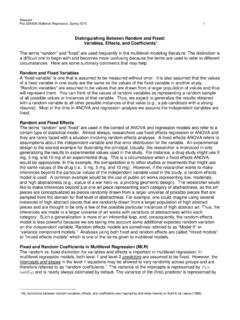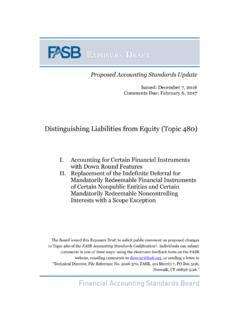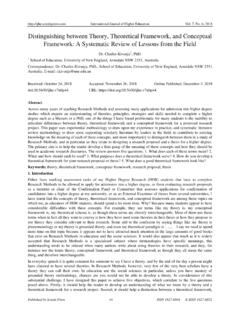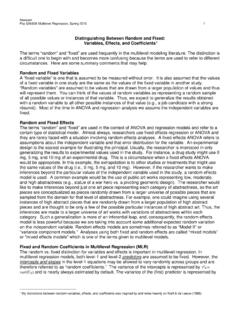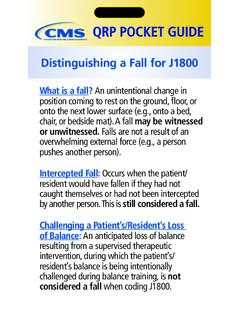Transcription of Key Issue 4D: Distinguishing between Program Service ...
1 Courtesy of Pamela A. Mainini, Certified Public Accountant Page 1 Non-Profit Accounting: Distinguishing between Program Service , Management and General, and Fundraising Expenses Background Organizations described in Internal Revenue Code Section 501(c)(3) must report total expenses by type ( , salaries, occupancy and supplies) and by function ( , Program , administrative and fundraising). Requiring these entities to report expenses this way provides the IRS and donors with information to use in determining if an appropriate amount of expenditures is being directed to activities that further an entity's exempt purpose. The IRS is interested in ensuring that the organization's financial resources are focused on performing its charitable programs. Also, since Form 990 is open to public review, Part IX allows the general public to see how much of the organization's funds are spent on Program services (compared to fundraising and management and general expenses).
2 With the exception of expenses attributable to rental revenue, costs and expenses relating to sales of assets other than inventory, direct expenses of special fundraising events, cost of goods sold from inventory, and payments to affiliates, all expenses paid or incurred by the organization must be reported this way. The challenge is determining under which of the three functions ( , Program Service , management and general, or fundraising) each expenditure should be reported. Expense Classification in General Some costs incurred by an organization are easily identified as pertaining to a specific Program or support function; for example, the salary of an individual working exclusively on a particular Program Service . These costs should be charged directly to that function. The function of other costs may not be as readily identifiable.
3 For these costs, generally accepted accounting principles (GAAP) may be used as a guide for Distinguishing between the different types of functional costs. Examples of costs that should be directly charged to a specific function are discussed in the remainder of this key Issue . Certain costs, however, cannot be allocated to a single function. Instead, these expenses apply to more than one area, ( , overhead costs such as rent or telephone). In allocating this second category of expenses among the different functions, an organization is allowed to use any reasonable method. The method used must be documented in the organization's records. Program Service Expenses Program Service expenses are the direct and indirect costs related to providing the organization's programs and social services ( , the activities forming its basis for exemption from tax).
4 Courtesy of Pamela A. Mainini, Certified Public Accountant Page 2 Management and General Expenses Management and general expenses are not identifiable with a specific Program or fundraising activity, but are normally indispensable to the organization's continued existence. The extent to which certain salaries and related payroll costs, occupancy and related costs, and other expenses are identified as management and general costs vary widely among organizations. In a large national organization, overall planning and coordination of activities may command the full-time attention of several executives and their staffs. In small organizations, the executive director's time may be divided between management functions, Program activities, and fundraising efforts. Example: Activities identified as part of the management and general function.
5 Management and general expenses are normally identified in the same manner as those related to Program services or fundraising by identifying the organization's activities and then determining the direct and indirect expenses of those activities. Examples of activities, the costs of which should be reported as management and general expenses, include: 1. determining the overall direction of the organization; 2. general recordkeeping; 3. office management ( , negotiating lease agreements for office space or office equipment rentals and setting policies for office procedures); 4. general board and committee meetings; 5. executive direction and corporate planning; 6. general staff meetings; 7. business management ( , determining the need for and helping to establish new local chapters of the national organization); 8.
6 Managing the organization's investments, unless related to rental income or Program -related income; 9. corporate legal services; 10. personnel administration; 11. reception, switchboard, mail distribution, filing, and other general office activities; 12. general accounting, auditing, budgeting, and financial reporting; and 13. general liability insurance. Fundraising Expenses Fundraising costs are associated with soliciting others to contribute money or other property, time, or the use of facilities or other property for which the contributor will receive no direct economic benefit. These costs can include expenses of personnel, consultants, rent, printing, postage, telephone, direct mail lists, direct contact solicitations, and unsolicited merchandise sent to encourage contributions. Examples include: Courtesy of Pamela A.
7 Mainini, Certified Public Accountant Page 3 1. Costs of soliciting gifts or grants from foundations and other organizations, including the cost of obtaining government grants reportable on Form 990. [However, if the organization receives a grant specifically to do research, produce an item, or perform a Service that provides a direct benefit to the grantor, the costs of obtaining the grant and fulfilling its requirements are reported as Program Service expenses rather than as fundraising expenses.] 2. Expenses of attending clinics, workshops, and other activities for improving fundraising techniques. 3. Costs of radio and television material (to the extent it is not Program related). 4. Expenses of campaign "kick-off" dinners for an organization's fundraising volunteers.
8 Some organizations conduct special fundraising events, such as dinners, banquets, golf or tennis tournaments, theater parties, raffles, bingo games and door-to-door sales of merchandise. The related costs needs to be designated as direct fundraising costs and separated into types of expenses ( , facility rental, printing and copying, marketing, auctioneer, catering, etc.). Updated 08/18/09
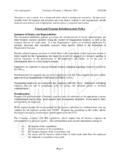

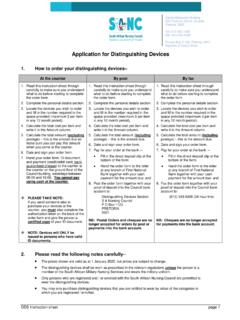
![arXiv:2005.14165v4 [cs.CL] 22 Jul 2020](/cache/preview/4/5/0/8/0/d/2/2/thumb-45080d222facc6d76a53aa8ccbd3eddb.jpg)

